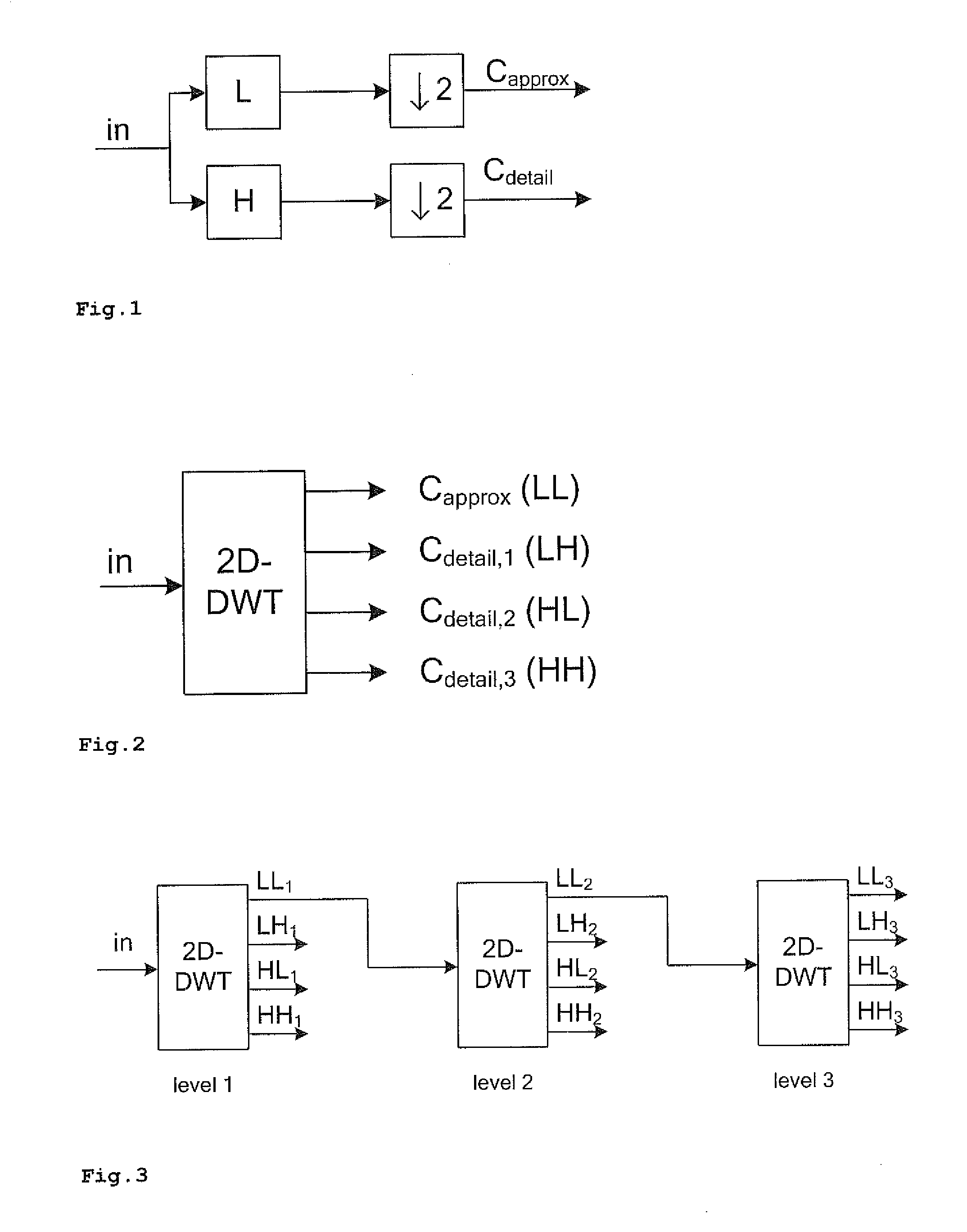Method and apparatus for selectively reducing noise in a digital signal
a digital signal and selective reduction technology, applied in image enhancement, image analysis, instruments, etc., can solve the problem of low precision and achieve the effect of finely graduated thresholding, expanding the range, and improving accuracy
- Summary
- Abstract
- Description
- Claims
- Application Information
AI Technical Summary
Benefits of technology
Problems solved by technology
Method used
Image
Examples
Embodiment Construction
[0032]While in the following the 5-tap / 3-tap filter is taken as a reference example, the invention applies also to other means for decomposition (also called analysis) and means for reconstruction (also called composition or synthesis).
[0033]FIG. 7 shows a wavelet filter bank based on multi-level decomposition and composition, where the input values inorig are expanded by an expand function Exp which results in expanded input values inexp. The expanded input values inexp are used for the decomposition stage 2D-DWT, which is a discrete wavelet transform in this case. To the output values of each sub-band of each level, thresholding functions ThLH1, ThHL1, . . . , ThHH3 are applied to remove (or at least reduce in terms of absolute value) coefficients that are below the respective threshold. These represent usually mainly noise, assuming that the thresholds are properly set. Thus, the noise is cancelled. Also small coefficients coming from the original signal are removed, but these ar...
PUM
 Login to View More
Login to View More Abstract
Description
Claims
Application Information
 Login to View More
Login to View More - R&D
- Intellectual Property
- Life Sciences
- Materials
- Tech Scout
- Unparalleled Data Quality
- Higher Quality Content
- 60% Fewer Hallucinations
Browse by: Latest US Patents, China's latest patents, Technical Efficacy Thesaurus, Application Domain, Technology Topic, Popular Technical Reports.
© 2025 PatSnap. All rights reserved.Legal|Privacy policy|Modern Slavery Act Transparency Statement|Sitemap|About US| Contact US: help@patsnap.com



